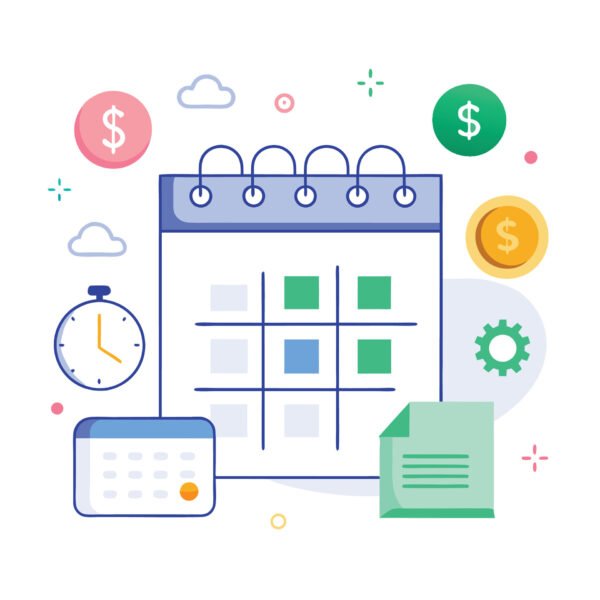Taking a comprehensive look at your debt situation is the first step toward freedom. Knowing exactly what you’re dealing with makes it easier to plan your way out, especially if it feels like a mountain to climb. Being $30,000 in debt is stressful, but breaking it down into more manageable chunks can make a huge difference.
Start by listing all your debts. This includes credit cards, personal loans, student loans, or anything else weighing on your finances. Next, it’s important to note the interest rates on each of them. This detail will help you decide on the best repayment strategy as we’ll discuss later. Understanding the full scope of your financial obligations gives you a clearer picture of what needs to be tackled first.
Once you’ve got your list, calculate how much you can realistically put toward these debts each month. Look at your income and essential expenses, then figure out what’s left over that can be devoted to debt repayment. If you’re coming up short, or just barely making it, don’t worry! There are ways to shift things around, which we’ll explore inbudgeting strategies.
Credit scores play a big role in managing debt too. Good credit can mean better terms on loans or balance transfers, potentially lowering interest and saving you money in the long run. Keep an eye on your score and consider ways to improve it if needed—paying on time and reducing credit utilization can help.
Ultimately, setting a realistic timeline is crucial. Trying to pay off $30,000 in a year is ambitious, but knowing your limits and what you can stretch within reason is key. Building this foundation will set you up for success, making each step forward more impactful.
Some of the links on this site are affiliate links, which means I may earn a small commission if you make a purchase through them—at no extra cost to you. I only recommend products and services I trust and believe will add value to you.
Contents
Crafting a Customized Repayment Strategy

Mapping out a repayment plan tailored to your situation can make a huge difference. With $30,000 in debt, having a strategy helps keep everything organized and less overwhelming. It’s crucial to know what needs your immediate attention and what can be handled over time.
Prioritize your debts by either the avalanche or snowball method. If minimizing interest payments is your main goal, the avalanche approach—paying off debts with the highest interest rates first—may be best. Conversely, the snowball method can keep you motivated by focusing on paying off smaller debts first, building momentum as you go. Both have their merits, so choose what best fits your circumstances.
Consider options like balance transfers or consolidation. Transferring high-interest credit card balances to a card with a lower rate can save you money. Just watch out for transfer fees and ensure you pay off the balance before any promotional periods end.
Setting up automated payments is another useful tactic. With this, you’ll never miss a payment deadline, avoiding any late fees or additional interest charges. It’s a simple way to stay on track without the constant worry of remembering due dates.
If you find yourself sinking, don’t hesitate to reach out to creditors. Many are willing to negotiate better terms if you’re upfront and honest about your situation. They might lower interest rates or offer a temporary payment plan until you get back on your feet. Being proactive in communication can lead to better outcomes.
Crafting a repayment strategy is not just about numbers but also about a mindset shift. It’s about creating a sustainable approach that keeps you committed and moving forward, however slow or fast that progress might be.
💬 Real Story: How Sarah Paid Off $32,000 in Just 12 Months

When Sarah, a 29-year-old single mom from Ohio, first saw her total debt—$32,457 across three credit cards, a car loan, and a medical bill—she broke down in tears. “I was working full-time, raising my daughter, and still barely making minimum payments. It felt endless,” she recalls.
Her Turning Point
Everything changed when she stumbled upon the debt snowball method. Instead of trying to tackle everything at once, she focused on her smallest balance first, building momentum.
“My first debt was just $547. I paid it off in three weeks, and suddenly I had hope again.”
She also made lifestyle changes:
- Cancelled all subscriptions except internet and phone
- Took on weekend DoorDash shifts
- Cut grocery costs by $200/month using meal prep
Her Strategy in a Nutshell
| Category | Action |
|---|---|
| Debt Method | Snowball (smallest to largest) |
| Monthly Payoff Goal | $2,700 |
| Side Hustles | DoorDash, babysitting, surveys |
| Total Paid in 12 Months | $32,320 |
The Outcome
By the end of the year, Sarah was debt-free. “The emotional weight was heavier than the financial one,” she says. “Paying it off gave me my life back.”
Budgeting for Success: Creating a Debt-Free Plan

A successful budget acts like a roadmap, guiding you toward financial freedom. It’s about taking control of your income and expenses, ensuring every dollar has a job. When you’re working to pay off $30,000 in debt, a clear plan brings structure and purpose to your financial decisions.
Tracking expenses is the first big task. Every coffee, utility bill, and subscription should be accounted for. Understanding your spending habits uncovers areas ripe for adjustment, revealing money that can be redirected toward debt.
Dedicating a portion of your budget exclusively to debt repayment sets clear boundaries. This debt fund needs to be untouchable unless used for its intended purpose. It’s helpful to view this fund not as a sacrifice, but as an investment in your financial health.
Finding ways to increase income or having a side hustle can significantly boost your repayment ability. Whether it’s freelancing, selling products online, or a part-time gig, every extra bit counts. It might require some extra effort, but it’s a temporary measure with long-term benefits.
Also, scrutinize non-essential expenses. With a few lifestyle adjustments, like cooking at home more often or canceling unused subscriptions, you’ll find extra funds to channel toward your debt. These sacrifices are temporary and can fast-track your progress.
By establishing a tangible budget plan and sticking to it, you’ll not only enhance your ability to pay off debt but also gain invaluable skills for long-term financial management.
Emotional and Mental Roadblocks: Strategies for Perseverance

Addressing the emotional side of debt is just as essential as the financial strategies. Debt can bring about stress, anxiety, and feelings of being overwhelmed, which can stall your progress. Identifying these emotional blockers helps in developing strategies to keep pushing forward.
Start by recognizing the psychological impact debt has on you. Whether it’s guilt, shame, or fear, acknowledging these emotions opens the door to dealing with them constructively. Sometimes, it helps to keep a journal or talk through your feelings with someone you trust.
Incorporate mindfulness and stress-reduction techniques into your routine. Simple practices like meditation, exercise, or even deep-breathing exercises can significantly reduce anxiety, offering a clearer headspace for tackling your financial goals.
Setting milestones and rewarding yourself for reaching them keeps the journey less daunting. Celebrate small victories, as they symbolize progress and keep you motivated. Remember, it’s about the long haul, and every little step counts.
Having a supportive community around you can be a game-changer. Whether it’s friends, family, or groups facing similar challenges, sharing progress and setbacks creates a network of encouragement. Find an accountability partner to help keep you on track and remind you of your reasons for this journey when times get tough.
Maintaining mental resilience is about more than just paying off debt. It’s about building a mindset that sees challenges as opportunities for growth, arming yourself with tools and attitudes that prepare you for future financial success.
Leveraging Financial Resources and Expert Advice

When aiming to tackle a significant amount of debt, drawing on external resources and seeking expert guidance accelerates progress. Exploring these avenues equips you with knowledge and strategies beyond what you might discover on your own.
Consider reaching out to a financial advisor or counselor if you find yourself stuck or unsure. They can offer tailored advice based on your unique situation, perhaps suggesting tactics you hadn’t thought of. Their expertise provides an unbiased view, helping you adjust your strategy where necessary.
Look into assistance programs that might offer debt relief orconsolidation options. These programs are designed to streamline repayment processes, sometimes providing lower interest rates or more manageable terms. It’s crucial, however, to carefully evaluate their conditions and ensure they’re legitimate.
Turning to success stories can also be inspiring and educational. Hearing from others who’ve successfully navigated similar challenges can offer reassurance and actionable tips. They remind you of what’s possible with determination and the right approach.
Keep a close watch on your progress. Regularly reviewing your financial situation keeps you focused on your goal and helps identify areas where you can ramp up efforts. Adjust strategies as needed to maintain momentum and stay on course.
By tapping into available resources and seeking expert advice, you’re not just dealing with the debt effectively, but also building a foundation of financial knowledge that will serve you well beyond this challenge..

